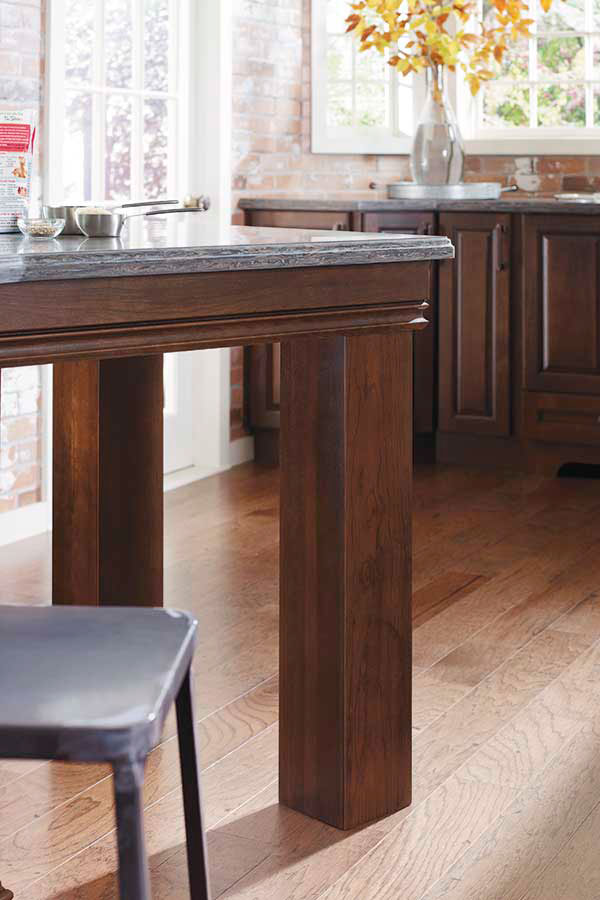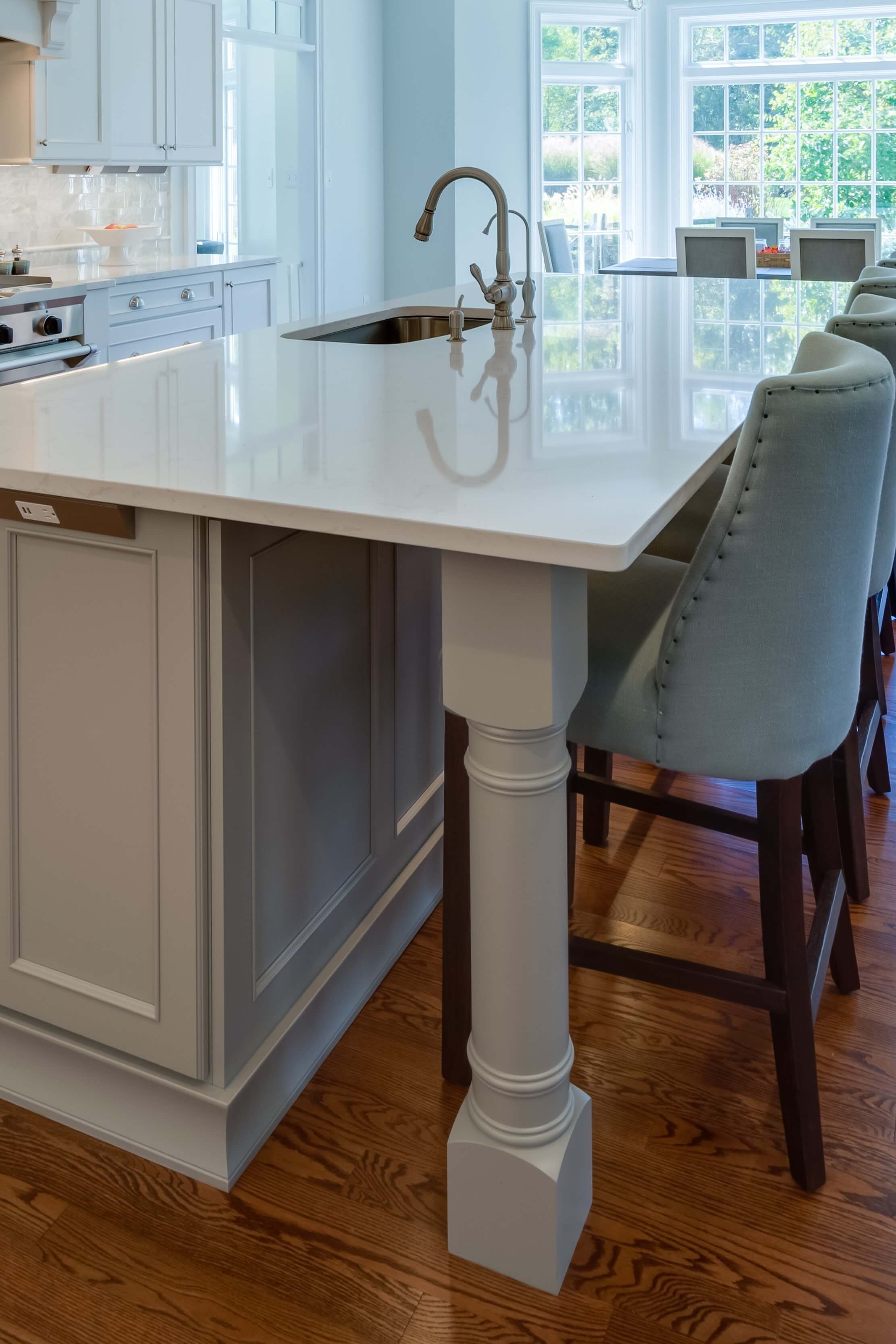Cutting-edge and Trendy Layouts in Modern Legs For Kitchen Island Solutions
Cutting-edge and Trendy Layouts in Modern Legs For Kitchen Island Solutions
Blog Article
Key Factors To Consider for Finding the most effective Legs For Cooking Area Island for Your Layout
When picking the perfect legs for your kitchen area island, a number of key factors to consider come right into play that can significantly influence both performance and aesthetics. The option of design, elevation, and product should align with your total cooking area style to make sure a harmonious appearance. Furthermore, stability and maintenance needs are essential for long-term usage and convenience of treatment. Recognizing these aspects can boost your kitchen's functionality and aesthetic charm, however the nuances of each consideration can frequently be forgotten. What effects might these choices carry your kitchen's general environment?
Determine Your Style Choice
Determining your style preference is essential when selecting the optimal legs for your kitchen area island. The legs of your cooking area island not just serve a useful function but additionally add dramatically to the general aesthetic of the area. Consequently, identifying your design style-- be it modern-day, rustic, conventional, or commercial-- is important.
For a contemporary kitchen, think about sleek, minimalistic legs that complement clean lines and open rooms. Typical kitchens commonly favor transformed or elaborate legs, which can add a touch of elegance and refinement.
Additionally, think about the elevation and proportion of the legs in relation to the island's surface. Eventually, your style choice will certainly affect not only the selection of legs however likewise the general harmony of your kitchen area's style.
Pick the Right Material
Selecting the appropriate material for your cooking area island legs is crucial in making sure both resilience and visual allure. Various products provide distinctive advantages, and the selection commonly shows your style preferences and useful demands.
Timber is a preferred selection, providing warmth and versatility. It can be discolored or painted to match your kitchen style, making it adaptable to various designs, from rustic to modern. However, timber might call for regular upkeep to protect its look and stability.

If you seek a special touch, take into consideration acrylic or glass products. They can create an impression of area and agility in your cooking area, making them an outstanding choice for smaller locations - Legs For Kitchen Island. These choices may call for cautious handling and upkeep to avoid scrapes.
Inevitably, the material you pick ought to line up with your kitchen's total style, making certain that the legs serve both ornamental and useful objectives.
Take Into Consideration Elevation and Proportions
When designing a cooking area island, height and proportions play an important role in making certain functionality and comfort,. The common elevation for a kitchen area island usually ranges from 36 to 42 inches, straightening with conventional counter elevations or bar heights, specifically. This dimension is vital for harmonizing with bordering feceses and kitchen counters, enabling simplicity of use during dish preparation and social interactions.
Additionally, the island's percentages have to complement the total kitchen layout. A well-proportioned island must not bewilder the area; instead, look these up it needs to develop a balanced aesthetic. Take into consideration the ratio between the island's width and length, guaranteeing it offers ample surface area without crowding the kitchen area. A general guideline is to preserve a size of 24 to 48 inches, assisting in activity and ease of access.
In addition, the elevation of the legs or base can affect the visual charm and functionality. Taller legs may offer a more modern, ventilated feel, while much shorter ones can stimulate a typical, grounded appearance. Ultimately, thoroughly considering height and proportions will lead to a cooking area island that is both visually attractive and functionally effective, boosting the general design of the room.
Assess Security and Longevity
A cooking area island's legs need to not only complement its elevation and proportions however also give ample security and sturdiness to support everyday activities. The legs are vital to the total functionality of the island, as they birth the weight of the countertop and any kind of additional tons, such as devices or cooking jobs.
When examining stability, it is vital to take into consideration the leg layout and material. Sturdy metal or strong hardwood legs frequently provide premium stamina contrasted to lighter materials like engineered timber or plastic. In addition, a bigger base can enhance security, decreasing the danger of tipping or tottering during usage.
Resilience is equally important; the legs must withstand wear and tear from everyday usage. Think about finishes that shield against scrapes, dents, and moisture, specifically in a cooking area atmosphere. Additionally, evaluate the top quality of building and construction, such as attachments and joints, which can significantly impact the legs' long-lasting performance.
Inevitably, buying well-crafted legs that prioritize stability and toughness will guarantee your kitchen area island remains a reputable workspace for years to come, boosting your culinary experiences while keeping visual allure.
Variable in Upkeep and Care
Maintenance and treatment are vital considerations for making sure the long life and performance of cooking area island legs. When picking legs, it is necessary to evaluate the products used, as different alternatives require differing degrees of upkeep. For example, wooden legs might need regular refinishing or securing to avoid moisture damages and scrapes, while metal legs may need regular polishing to maintain their luster and prevent corrosion.
Furthermore, the finish put on the legs can influence maintenance demands. A high-gloss finishing might be simpler to clean but might show scratches and fingerprints quicker than a matte coating. It is advisable to choose materials and coatings that complement your way of living; as an example, if you often organize gatherings, select durable materials that can withstand wear and her response tear.
Furthermore, consider the cleaning process associated with preserving these legs. Smooth surface areas typically require minimal effort, while detailed layouts might build up dirt and gunk, necessitating more labor-intensive cleaning techniques. Legs For Kitchen Island. Ultimately, considering the maintenance and treatment required for your selected cooking area island legs will not only enhance their visual appeal however additionally ensure their practical integrity over time
Verdict
Finally, choosing the optimum legs for a kitchen area island demands careful factor to consider of various factors, including layout style, product choice, height, security, and maintenance. Each element plays a vital role in making certain that the legs not just improve click this link the visual allure of the kitchen but likewise offer the essential assistance and durability for day-to-day use. A well-informed choice will eventually add to a practical and visually pleasing kitchen area atmosphere.
The legs of your kitchen island not only serve a functional purpose yet additionally contribute dramatically to the total aesthetic of the room.Upkeep and treatment are essential factors to consider for guaranteeing the long life and performance of cooking area island legs. Wooden legs may require routine refinishing or securing to avoid dampness damages and scrapes, while steel legs may require routine brightening to preserve their shine and stop rust.
Ultimately, factoring in the upkeep and care needed for your selected kitchen island legs will certainly not just improve their aesthetic allure yet also ensure their functional integrity over time.

Report this page